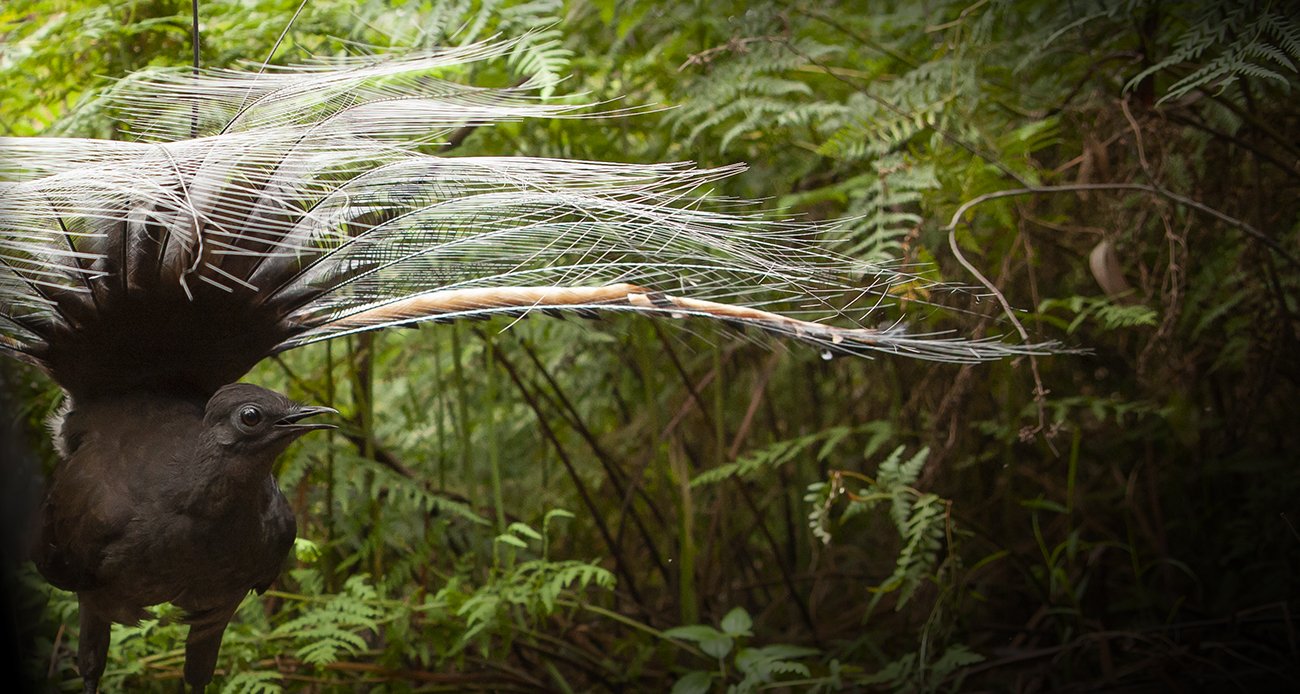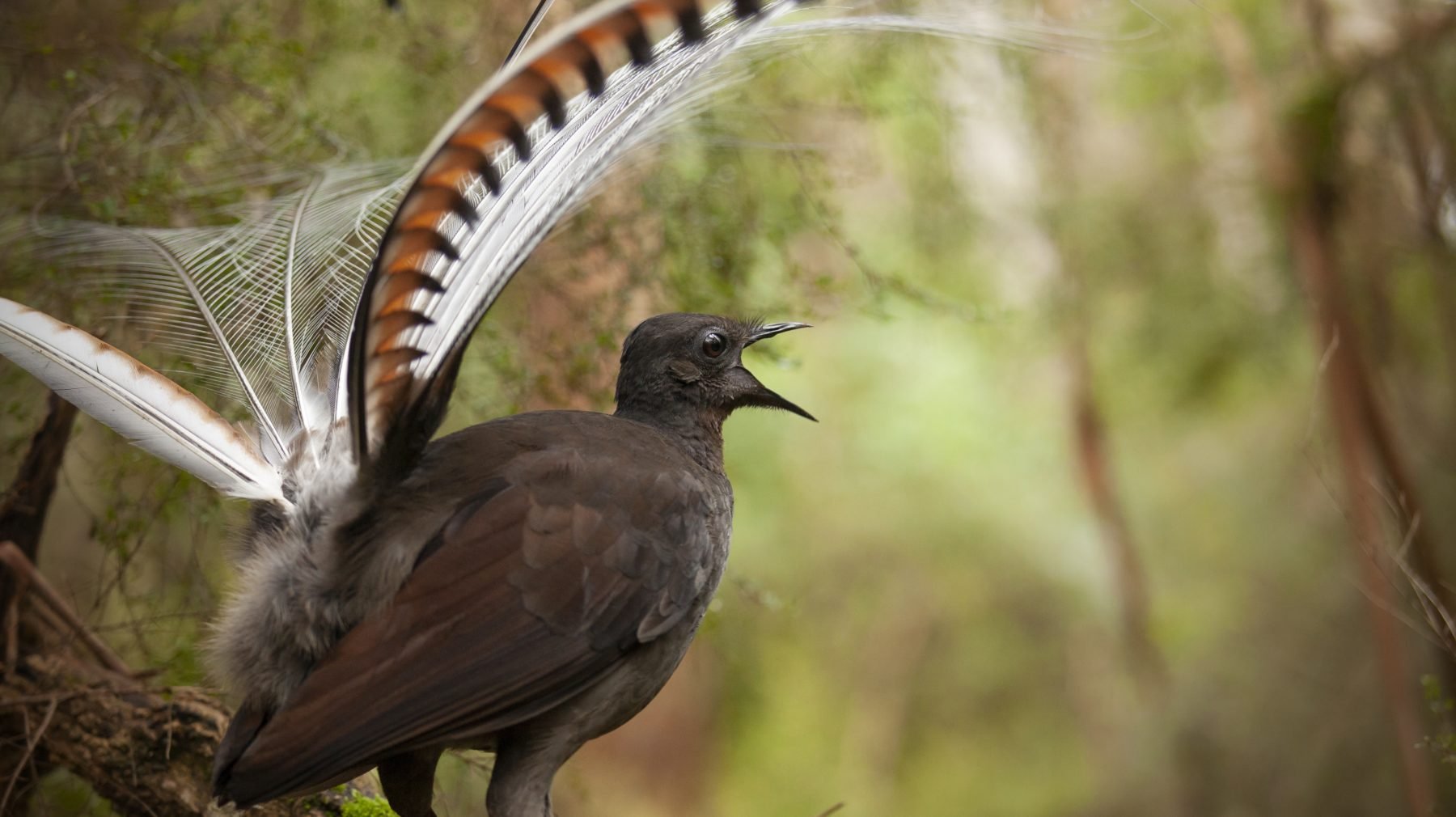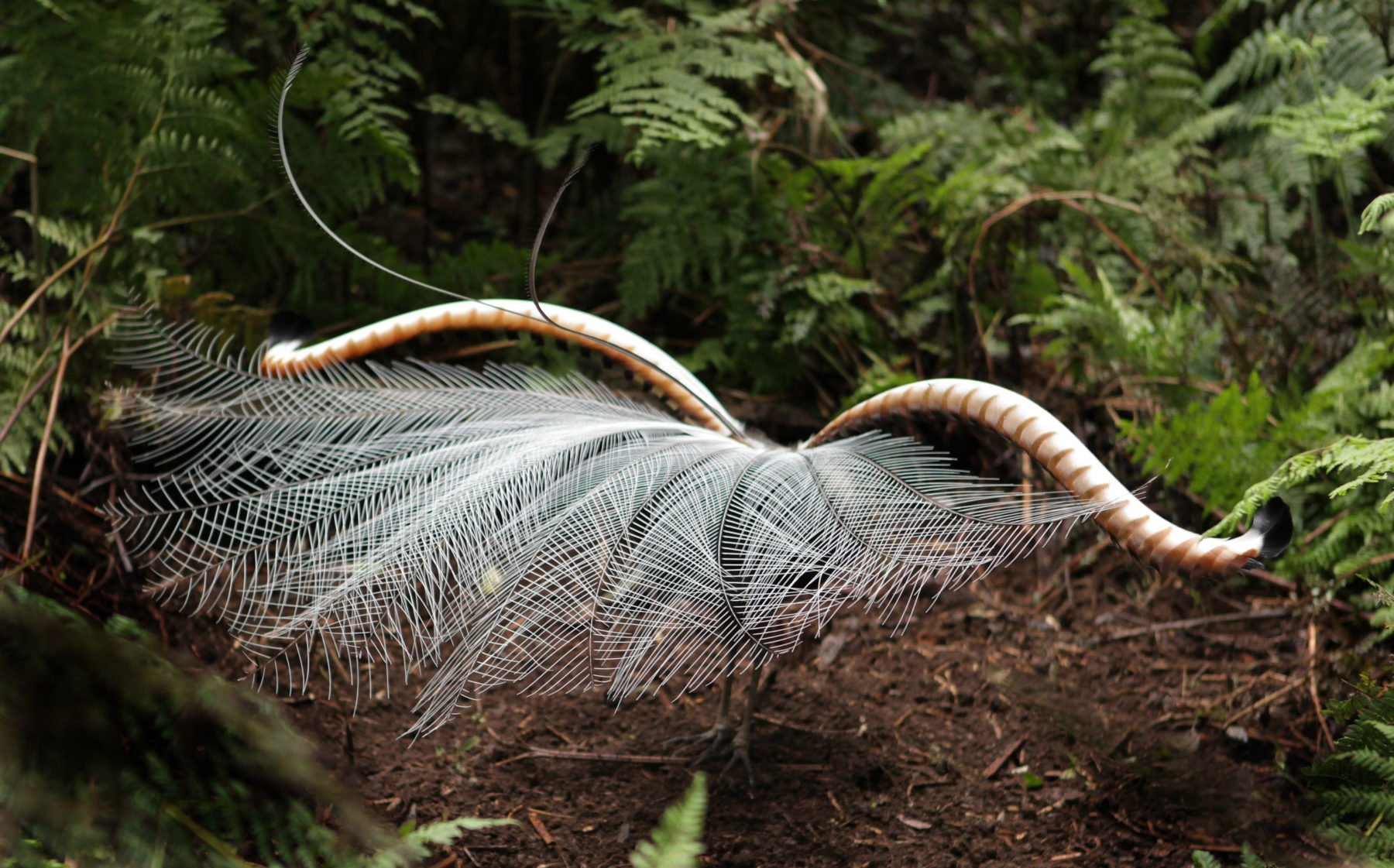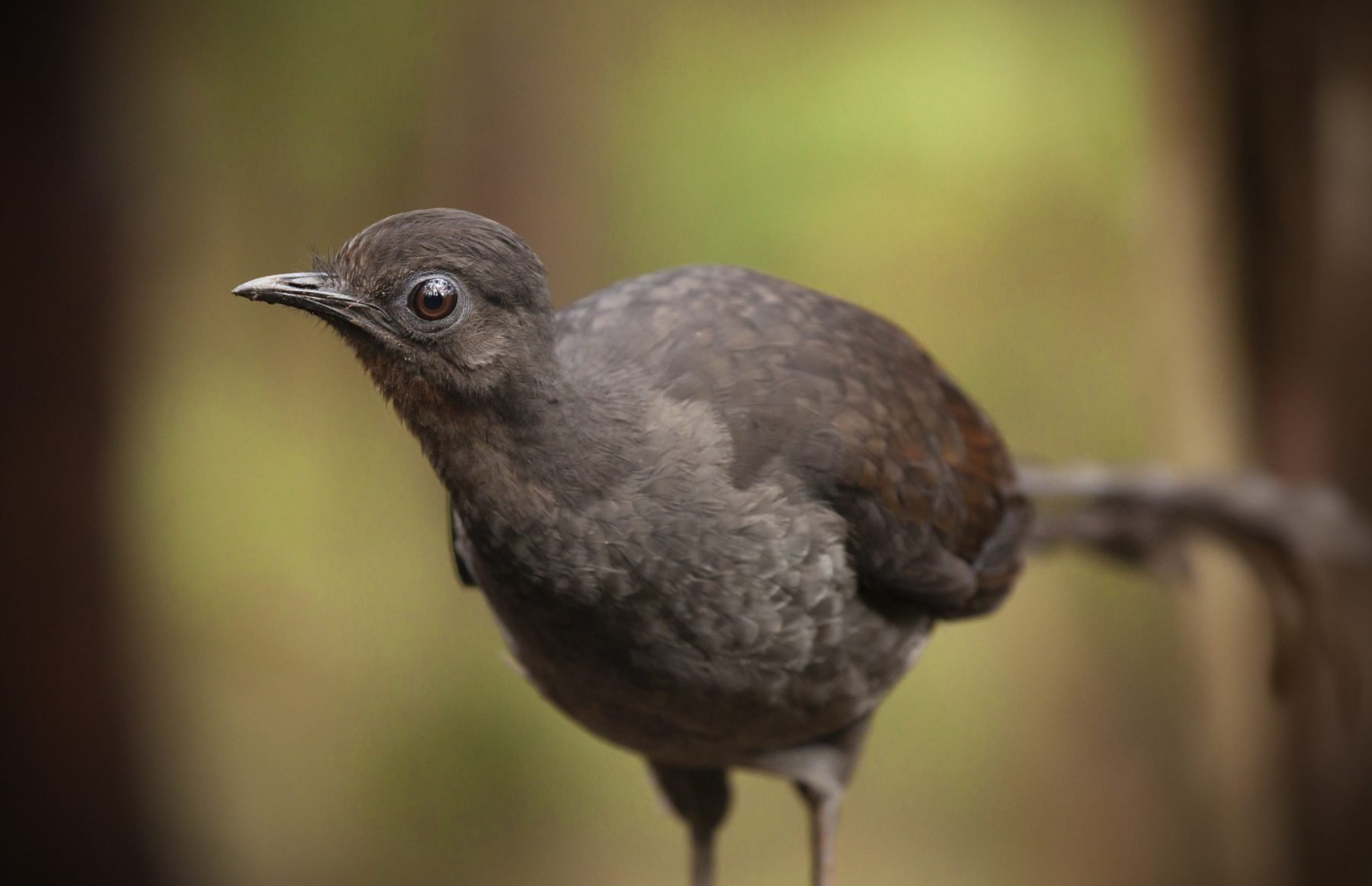As if superb lyrebirds (Menura novaehollandiae) weren’t intriguing enough, the sex life of these magnificent creatures has just become even more colourful.
Researchers from the University of Wollongong, Western Sydney University and Cornell University have identified a bizarre audio-visual display in which males toss their tail over their head and dance backwards away from the female.

Despite their justified reputation for skilful vocal mimicry, during this backwards dance males only produced a rhythmic clicking call.
Superb lyrebirds live in the wet forests of south-east Australia. During the breeding season, each male builds and defends a clustered set of ‘mounds’ (up to 20 within his breeding territory): circular patches measuring roughly 1–2m in diameter on the forest floor that function like an intimate stage for the male’s sophisticated song and dance displays.
Lead author Dr Anastasia Dalziell said the new research highlighted an additional and largely overlooked functional context for complex courtship choreography in birds.

“The backwards dance and vocal clicking point to a role for sexual selection after copulation in the lyrebird’s mating system,” she said.
Using hidden cameras in the Blue Mountains and national parks in Victoria, Anastasia and her co-author Dr Justin Welbergen filmed nine displays by male birds after successful mating.
“In all displays, males inverted their tails over their heads with the tips of the feathers facing the female and vibrating,” she said.
“In contrast, females typically remained on the display mound after copulation in silence, preening and occasionally picking up lyrebird breast feathers that had been dislodged during copulation.”
Anastasia said more research will be conducted into the displays but suggested a number of evolutionary explanations for the complex behaviour after mating.
These range from a need to signal the male’s individual identity, an invitation to the female to mate again, or even an attempt to calm female anxiety so the sperm is more likely to be retained.

“We suspect male superb lyrebirds dance after copulation in an attempt to persuade females to re-mate,” Anastasia said. “The dance has the appearance of an ornate invitation to a male’s secluded dancing arena.
“In nearly all bird species studied to date, females mate with more than one male so it’s highly likely that female lyrebirds too are promiscuous.
“Another general outcome of female promiscuity in birds is for individual males to attempt to mate multiple times with the same female – mating just once with a fickle female may not be enough to father her young.
“We suggest that more study of these puzzling ornate behaviours, in both sexes and across a broader range of avian species, will likely provide important insights into the evolutionary outcomes of sexual selection in birds.”

Video credit: Dalziell, A. H., & Welbergen, J. A. (2022). Male Superb Lyrebirds (Menura novaehollandiae) perform an ornate multimodal display immediately following copulation. Ibis. doi: 10.1111/ibi.13052



